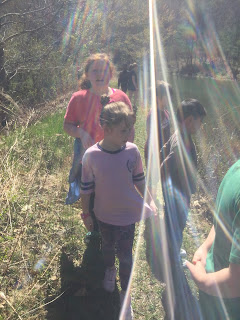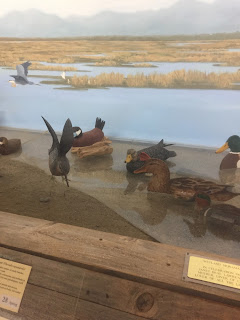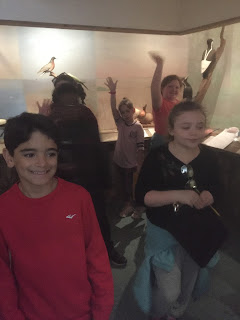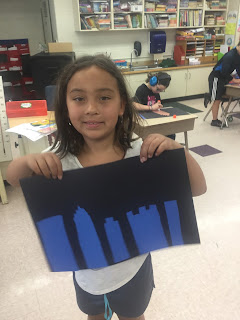Dear Third Grade Families,
Third graders worked on a combined mathematics and art project this week. We read Amanda Bean's Amazing Dream by Marilyn Burns. The book is set in the city, where a young girl sees many arrays and learns the value of multiplying instead of counting one-by-one. Students created an Array City of skyscrapers with hidden arrays for viewers to find. Take a look at some of our work in the photos below.
Third grade scientists are studying plant and animal life cycles and interdependent relationships in ecosystems. Students are reading, researching, and conducting investigations to work towards understanding that plants and animals are affected by changes to their environment and animals work together to survive.
We are looking forward to our field trip to the Vermont Bird Museum on May 8th. Students have read about bird life cycles, the physical and behavioral adaptations of birds, and they have chosen a Vermont bird to research. See the photos below of students conducting a bird beak investigation today.
This month, third grade mathematicians are learning about fractions. Students are learning to represent a fraction on a number line and to partition models into equal parts. Students use models to understand equivalent fractions. For example: 1/2 = 2/4. Students are learning that fractions are equivalent to whole numbers (3/1 = 3, 8/1 = 8, etc...). Students are learning that the size of the whole matters. If you and a friend each have one half of a pizza, but your friend's pizza is a large pizza and your pizza is a small pizza, you will not have the same amount of pizza (even though you both have one half of a pizza).
You can help to develop your child's understanding of fractions at home by cooking together. Ask your child what fraction the pizza has been partitioned into. Partition the banana bread into twelfths and divide the brownies into eighths. Cut your sandwich into fourths. Look at the measuring cup and read the fractions. Study the mixed numerals on a 4 cup measuring cup. How much is 1/4? Can you find 2 and 1/4?
Students learn about equivalent fractions and ways to make one whole through playing Fraction Fortress in the photo above.
We are approaching the end of the school year. Third graders are working hard to memorize the multiplication facts prior to the end of the school year. We are working on the x 9 facts. We have learned that you can use a x 10 fact to solve a x 9 fact. Here's how it works.
I can use 3 x 10 to solve 3 x 9.
3 groups of 10 equals 30.
3 groups of 9 is equal to 30 - 3 because three 9's are three less than three 10's.
(3 x 10) - 3 = 3 x 9
(10 + 10 + 10 ) - 3 = 9 + 9 + 9
Another example:
5 x 9 = (5 x 10) - 5
9 + 9 + 9 + 9 + 9 = (10 + 10 + 10 + 10 + 10 ) - 5
Each 10 is one more than each 9, so you have to subtract 5 from 50.
Have a great weekend!
Sincerely,
Keelin M. Simpson




















































